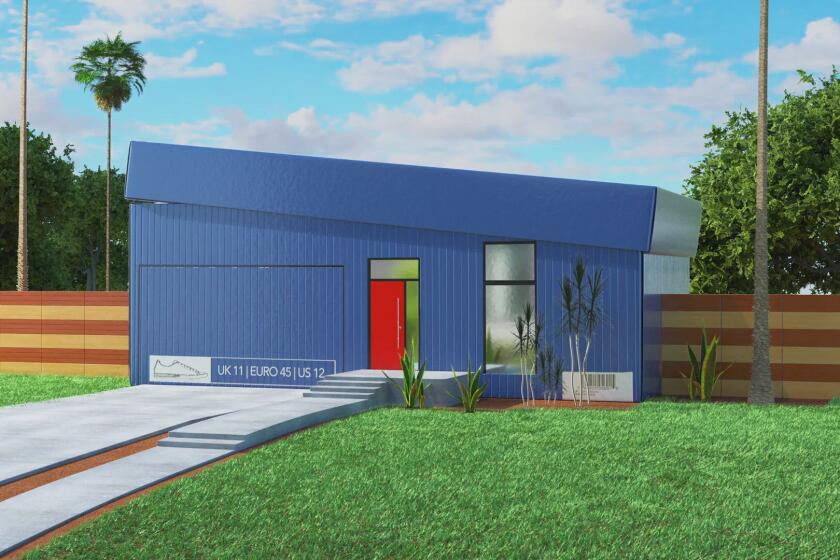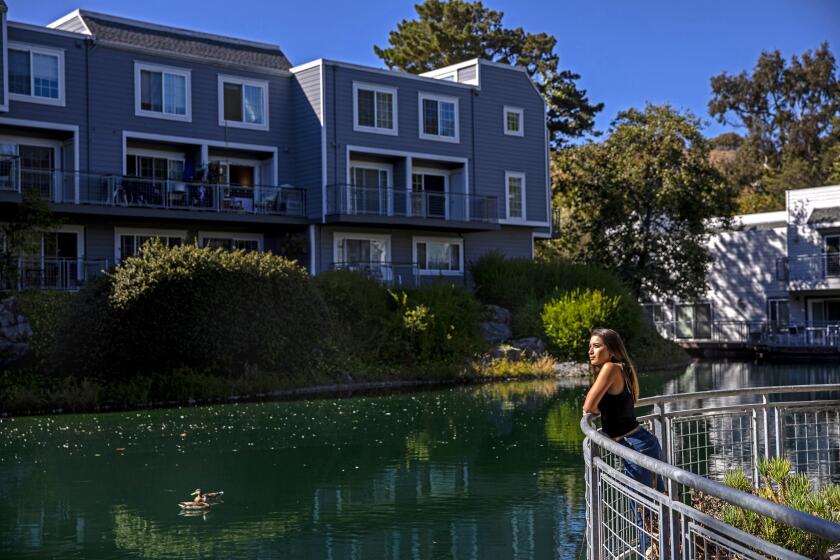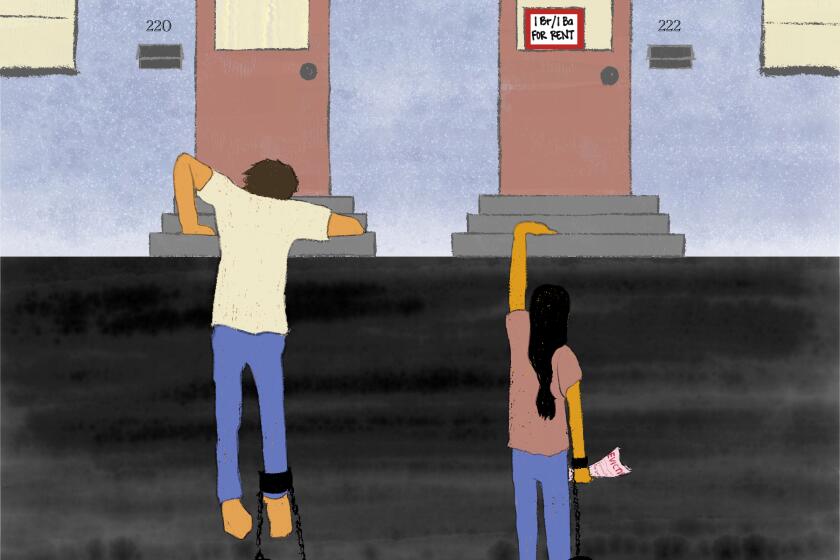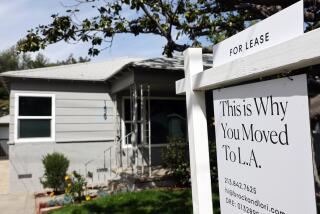Fewer people can afford to buy houses. Home builders hope they’ll choose to rent them instead
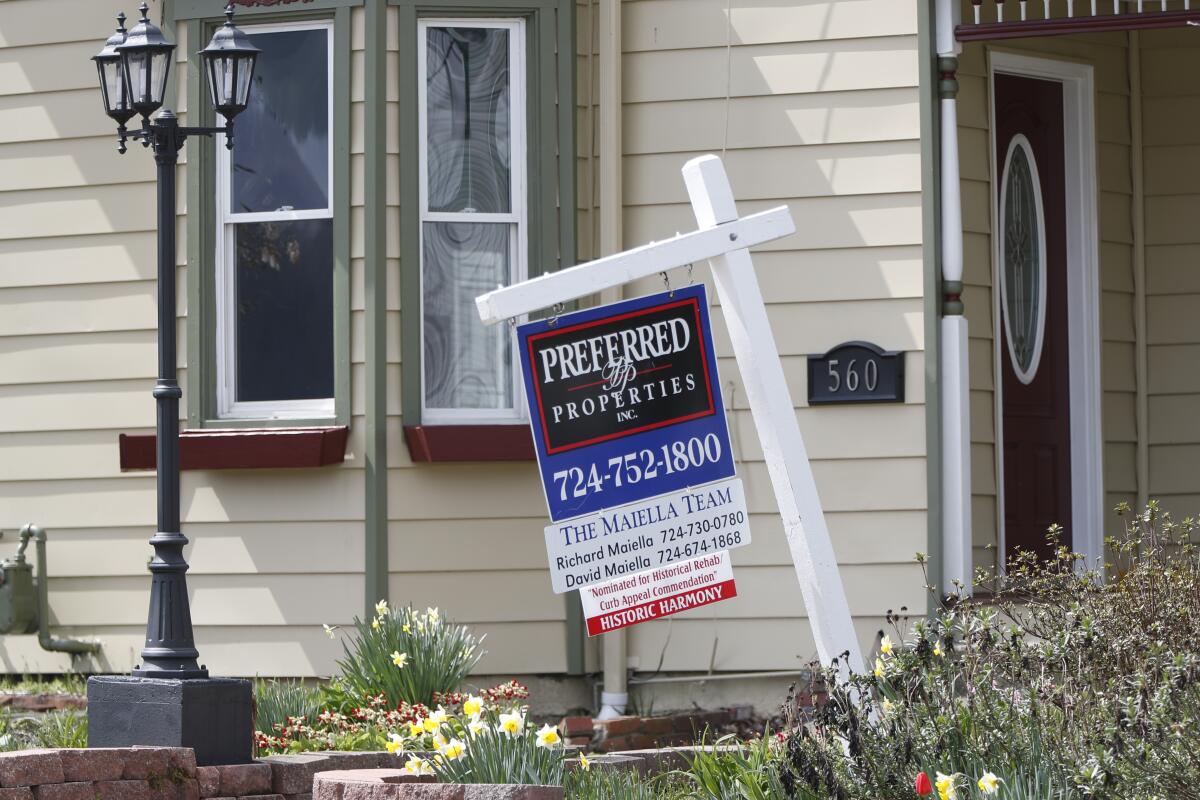
Home builders and other real estate companies are increasingly betting that would-be home buyers frustrated with a shortage of homes for sale and runaway prices will settle for renting their slice of the American dream.
Although individual homeowners and mom-and-pop investors still account for the vast majority of single-family rental homes, home builders have stepped up construction this year of new houses for rent.
In the third quarter, builders broke ground on 16,000 single-family homes slated to become rentals. That’s the highest quarterly total of housing starts for built-to-rent homes going back to at least 1990, according to an analysis of U.S. census data by the National Assn. of Home Builders.
COVID-19 unleashed new demand for homes, made the well-off wealthier, and fueled extreme bidding wars. The result? The $1-million home is everywhere.
The trade association’s analysis includes only homes that builders are going to hang on to and rent out. That excludes homes being built to be sold to real estate investment trusts or investors planning to rent the properties.
Although those rental homes accounted for only 5.4% of all single-family housing starts in the third quarter, builders are doubling down on the build-to-rent model, with some already aiming to build more homes for rent for investors or corporate landlords eager to capitalize should potential homeowners continue to struggle to find affordable properties.
“Traditional builders are finding it very hard to do entry-level housing,” said Ali Wolf, chief economist at Zonda Economics, a real estate industry tracker. “The build-to-rent space kind of serves its purpose as being entry-level housing in a market where new homes at a reasonable price point are few and far between.”
Rising home prices and fierce competition for relatively few affordable homes for sale are stretching the limits of affordability for many would-be buyers. The median price of a previously occupied U.S. home jumped to $353,900 in October, a 13.1% increase from a year earlier, according to the National Assn. of Realtors. Homes sell within days of being put up for sale.
These trends have been good news for landlords, however. Rents for U.S. single-family homes jumped 10.2% in September from a year earlier, according to real estate information company CoreLogic. The firm excludes apartments from its single-family home rental data, though it includes condominium and townhome rentals.
A new program involving local subsidies aims to help middle-income Californians afford better housing. Critics say it’s a bad use of public funds.
CoreLogic expects rents to continue climbing through at least the end of this year, citing strong demand, low supply of homes for rent and a strengthening job market.
Recent quarterly earnings from the nation’s two largest publicly traded owners of single-family houses for rent underscore the favorable outlook.
Invitation Homes and American Homes 4 Rent both reported strong third-quarter results, boosted by rising rents and occupancy rates near all-time highs.
BTIG analyst James Sullivan reiterated his “Buy” rating for both real estate investment trusts, noting that housing market trends — including the supply chain challenges and rising labor and material costs that are slowing the pace of construction for home builders — remain “very favorable” for single-family rentals.
Construction of new U.S. homes was running at a seasonally adjusted annual rate of 1.52 million units as of October, according to the Commerce Department. That’s an increase of 0.4% from the rate a year earlier. But single-family home starts fell 3.9% from September to October and were down more than 10% from a year earlier.
The number of housing starts for built-to-rent houses remains small relative to newly started homes slated for sale. All told, builders broke ground on 47,000 homes for rent over the last four quarters, a year-over-year increase of 17.5%, according to the home builders group. In the same period, builders broke ground on 1.14 million single-family homes.
Some of the nation’s largest home builders are looking to take advantage of the demand for built-to-rent homes.
When the pandemic-induced eviction moratoriums end, tenants will face a mountain of rent debt. Here’s a look at this emerging problem and what may happen next.
Some sell houses to investors or companies looking to take over communities already packed with tenants. In July, PulteGroup announced a deal to build and sell roughly 7,500 homes over the next five years to Invitation Homes.
D.R. Horton has been building apartment complexes and single-family rental home communities. This month, it estimated that its rental operations will generate more than $700 million in revenue from rental property sales during its current fiscal year. Horton also said it expects to increase its investment in its rental business by more than $1 billion in the same period.
Last spring, Lennar formed a venture with several institutional investors that aims to spend more than $4 billion to buy new single-family homes and townhomes from the home builder and, potentially, other builders, and then rent them.
“It’s really evolved over time, but the star of the real estate show today is the build-to-rent space,” Wolf said.
More to Read
Inside the business of entertainment
The Wide Shot brings you news, analysis and insights on everything from streaming wars to production — and what it all means for the future.
You may occasionally receive promotional content from the Los Angeles Times.
